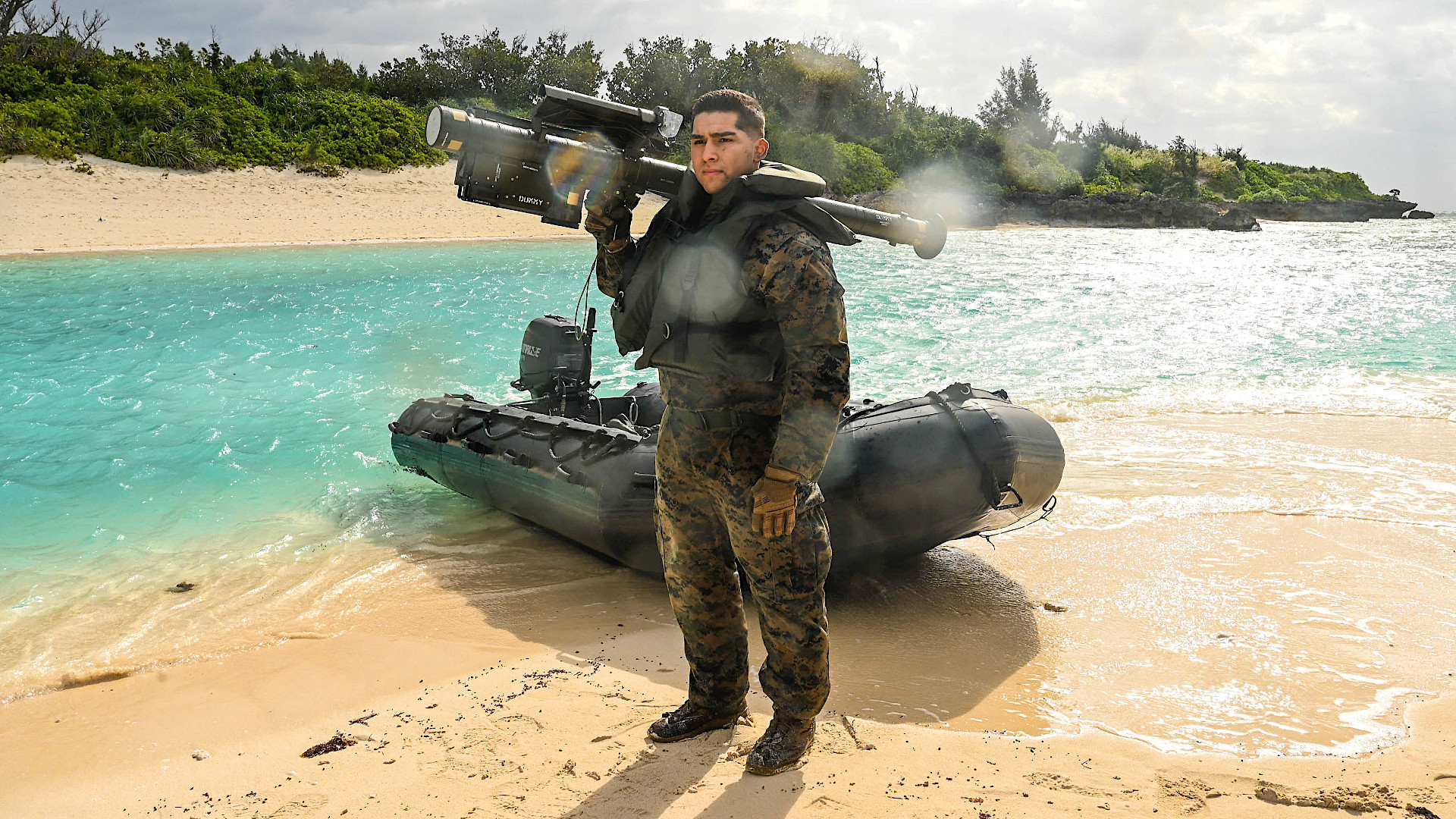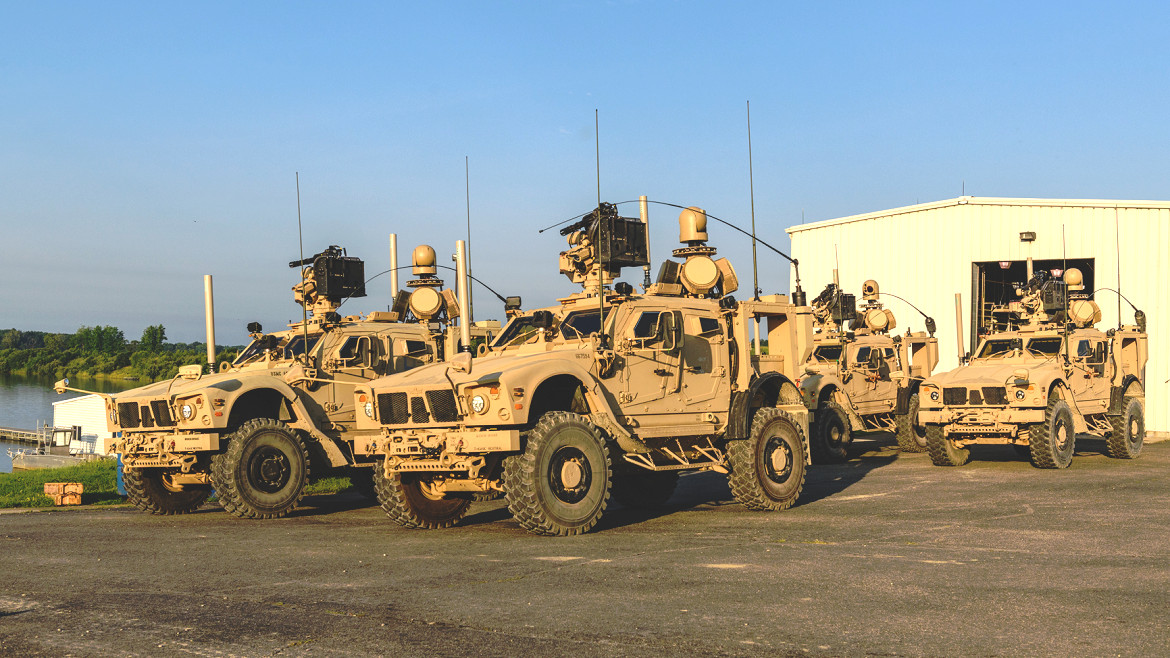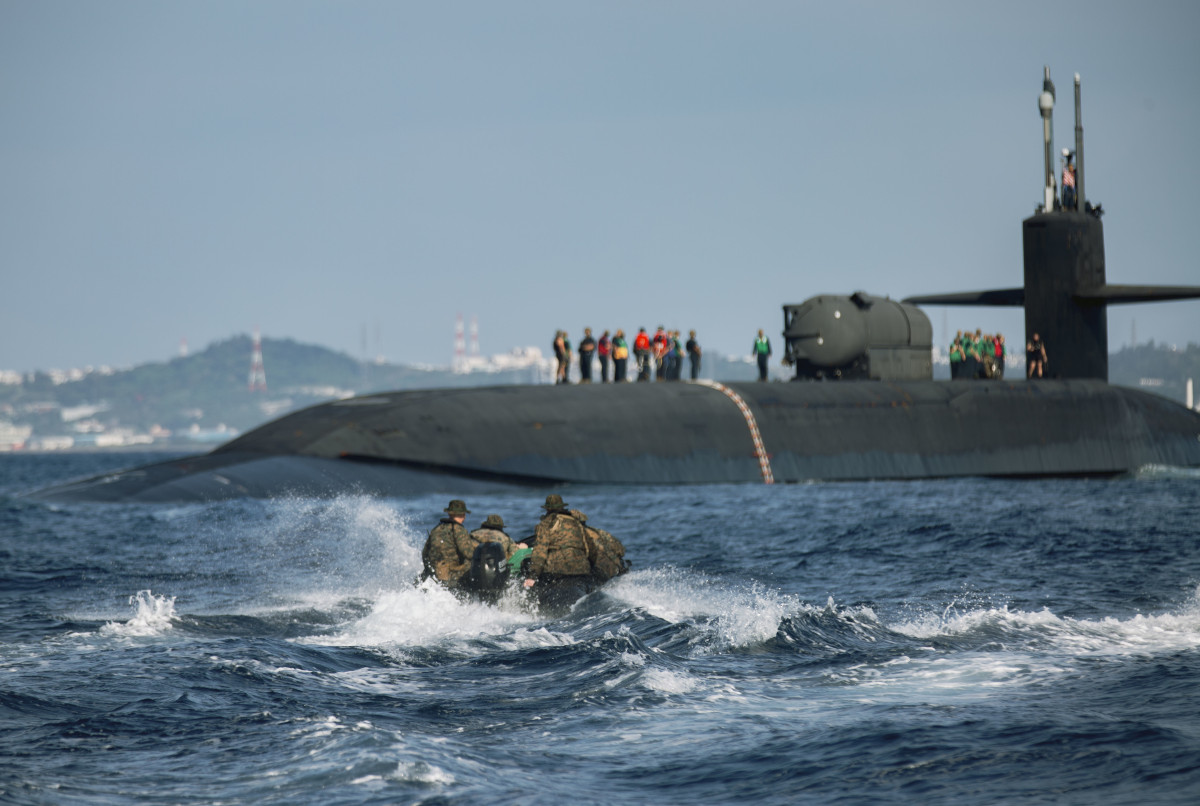A recent exercise on and around the Japanese island of Okinawa featured U.S. Marines armed with FIM-92 Stinger shoulder-fired surface-to-air missiles riding in rubber rafts. This offers a look into how the Marine Corps might incorporate short-range air defense capabilities into their new distributed and expeditionary warfighting plans. These concepts of operation are centered on the idea of being able to rapidly deploy and then reposition from location to location, even in expansive maritime environments where individual outcroppings of land may be very far from each another, such as in the Pacific region.
The Hagatna Fury 21 exercise took place earlier this month on Okinawa, as well as Ukibaru, a smaller island nearby. It involved mock airmobile assaults, utilizing CH-53E Super Stallion helicopters, as well as the forces in the Combat Rubber Raiding Craft (CRRC), a type of small, inflatable rubber watercraft. Marines from 3rd Battalion, 8th Marine Regiment, presently assigned to 3rd Marine Division in Japan, part of the III Marine Expeditionary Force (MEF), was the main unit taking part in the training.

“The exercise demonstrated that Marines are capable of seizing, defending, and providing expeditionary sustainment for key maritime terrain in support of the III Marine Expeditionary Force,” according to the Marine Corps.
The FIM-92 is a shoulder-fired, heat-seeking, surface-to-air missile, also known as a Man-Portable Air Defense System (MANPADS), that is designed primarily to engage low-flying targets, including fixed-wing aircraft, helicopters, and drones. In recent years, improved versions of the missile have been developed that offer improved capabilities against smaller unmanned aerial vehicles, which present a very real threat already and will only become more of a challenge to U.S. military operations, as a whole, as time goes on.
It’s not clear whether or not the Stinger-armed Marines conducted any training to prepare to actually engage aerials threats from the CRRCs, though one picture, seen at the top of this story, does show an individual in one of the boats aiming their launcher at a CH-53E. However, the backblast from firing an FIM-92 is not insignificant and, at least in training, no other personnel beyond the two-person Stinger team are supposed to stand within 164 feet of the launcher when a missile is loosed.

So, it’s unclear if it would be safe to fire the weapon from a rubber raft without some limitations put in place. The water around the boat would mitigate the backblast issue, as long as the rear of the launcher isn’t pointed at the boat or its occupants.
Marines, as well as U.S. Navy personnel, do routinely fire the weapons from the decks of larger ships. Still, even setting aside any potential safety concerns, one would have to wonder if the CRRC would provide a stable enough platform to effectively employ the weapon, at all.

At the same time, these rubber rafts could still provide a valuable way to quickly deploy at least some level of point air defense capability along with even very small Marine units during distributed operations. Even a light vehicle-mounted SHORAD system, such as the Humvee-mounted Avenger, or the vehicle-based counter-drone systems the Marines have been fielding in recent years, which are installed on 4×4 MRZR all-terrain vehicles or 4×4 Joint Light Tactical Vehicle trucks, would require heavy-lift helicopters or landing craft to get them from amphibious warfare ships to shore.

Using CRRCs as a way to transport Stinger teams could also open up additional options for getting them to or from a beachhead that don’t necessarily involve traditional amphibious warfare ships, which the Marine Corps is looking to reduce their reliance on, in general. This month, before Exercise Hagatna Fury 21 took place, Force Recon Marines from III MEF conducted training involving CRRCs together with the USS Ohio, one of four Ohio class ballistic missile submarines, or SSBNs, to have been converted to guided-missile submarines, or SSGNs. The SSGNs are really highly-specialized multi-mission boats with significant intelligence gathering and command and control capabilities, which you can read about in more detail in this past War Zone feature.

Beyond point defense, Stinger teams moving around in CRRCs, which have a very low profile in the water and can be difficult to detect, especially at night, might also present a novel challenge to enemy forces. MANPADS, broadly, have proven to be particularly threatening to aircraft, especially helicopters, when they are taking off and landing. As such, the sudden appearance of Marines with these weapons at multiple locations around a hostile island outpost could very well disrupt aviation operations there, even for a short period of time.
With this in mind, it’s interesting to note that Iran’s Islamic Revolutionary Guard Corps actively trains to employ MANPADS from small watercraft, though nothing as small as a CRRC, as part of its broader small boat swarm capabilities. The Iranians have also reportedly attempted to engage American drones using this very low-tier maritime air defense arrangement, highlighting a real-world use case.

It’s also worth pointing out that, even before the Marine Corps announced their radical force structure redesign focused on expeditionary and distributed operations in a maritime environment, the service was already talking about future operations involving swarms of small boats. “That’s part of how you counter the peer threat: ‘I’ll out-asymmetric you,’” now-retired Marine Corps Major General David Coffman, then the Navy’s director for expeditionary warfare, said in 2017.
“The Marine Corps largely got out of what we call itty bitty boats … the commandant wants us to get back in the boat business,” Coffman added at that time. “He’s recognizing he needs to distribute his force and be able to move in smaller discrete elements and different ways.”
As it stands now, the Marine Corps’ “itty bitty boat” capabilities primarily consist of craft like the CRRCs and slightly larger rigid-hull inflatable boats, or RHIBs. The Navy has more capable light watercraft, primarily within its Naval Special Warfare Command and Naval Expeditionary Combat Command. However, that service is now moving toward eliminating a significant number of its patrol boats, including all of its still very new Mk VI types, something The War Zone

The Navy’s decision regarding its patrol fleets, as The War Zone has already explored in detail, is already curious given the capability gaps it would create. It would seem more so given that exercises like Hagatna Fury 21 only underscore the importance of even smaller watercraft, in general, to future distributed maritime operations and their ability to support novel missions, such as expeditionary air defense. There is certainly the potential now for the Marine Corps to step up and potentially expand its light watercraft capabilities, perhaps even acquiring some of the Mk VIs that the Navy is now looking to get rid of.
No matter what, as retired Marine Major General Coffman said was likely to be the case four years ago, the Marine Corps’ existing “itty bitty boats” already look set to be an important part of its future warfighting concepts.
Contact the author: joe@thedrive.com
